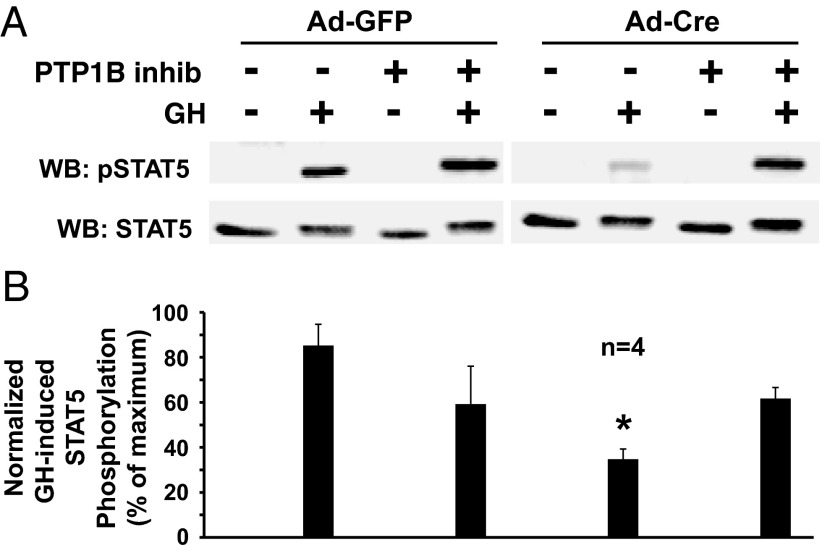Figure 2.
A PTP-1B inhibitor reverses the diminished GH-induced STAT5 phosphorylation resulting from IGF-1R deletion in osteoblasts. A and B, Primary osteoblasts were infected with Ad-Cre vs Ad-GFP, as indicated, as in Figure 1. Serum-starved cells were treated with (+) or without (−) the PTP-1B inhibitor, 3-(3,5-dibromo-4-hydroxy-benzoyl)-2-ethyl-benzofuran-6-sulfonicacid-(4-(thiazol-2-ylsulfamyl)-phenyl)-amide (10 μM; 1 hour) and then with GH (+; 250 ng/mL) or vehicle (−) for 10 minutes. Detergent cell extracts were resolved by SDS-PAGE and immunoblotted with anti-pSTAT5 and anti-STAT5. A, Representative immunoblots. WB, Western blotting. B, Densitometric quantitation of pSTAT5/STAT5 signals from GH-treated samples from four independent experiments (including that shown in A). In each experiment, the maximum signal was considered 100%. Data are plotted as mean ± SE. *, P < .01 for comparison of Ad-Cre-infected, non-PTP-1B inhibitor-treated, GH-treated group to either the Ad-GFP-infected, non-PTP-1B inhibitor-treated, GH-treated group or the Ad-Cre-infected, PTP-1B inhibitor-treated, GH-treated group.

